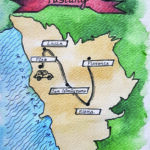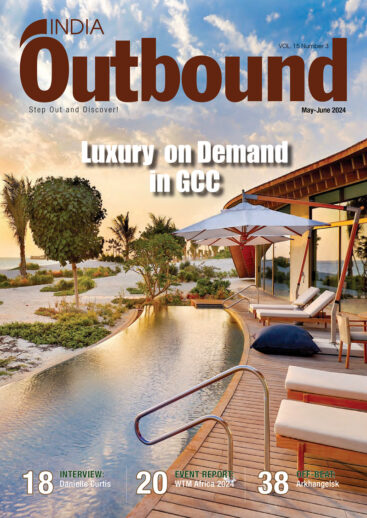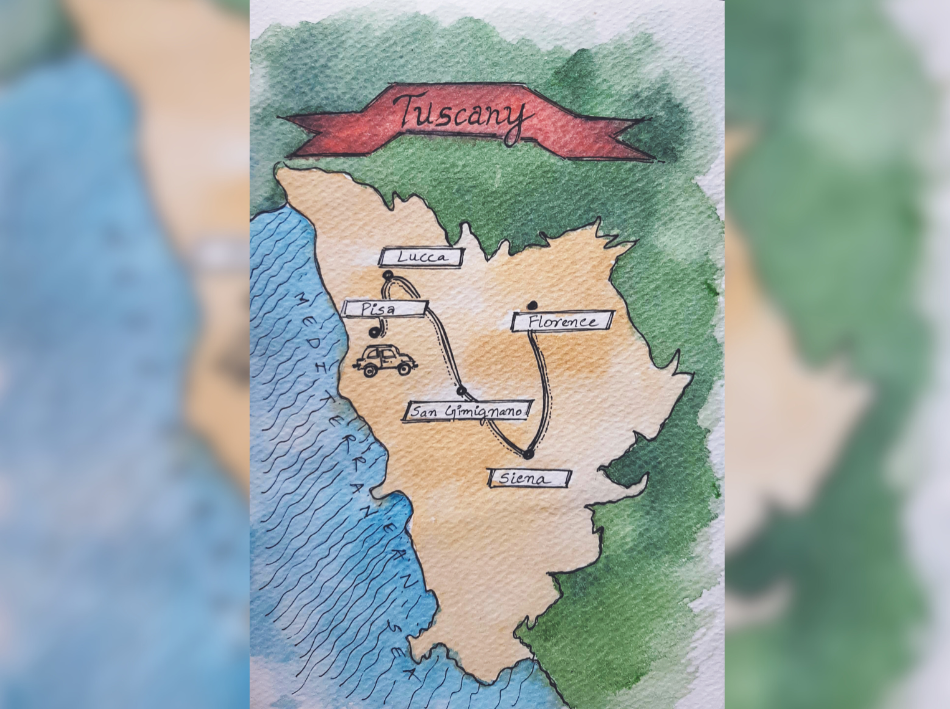
Tuscany is man and nature working in extraordinary harmony to sing a soothing melody (Text & sketches: Shikha Shah)
Imagine driving on roadways lined with centuries old cypresses, surrounded by a dreamy landscape of rolling hills, green valleys and rows of grapevines and olive groves, peppered with picturesque country houses, hamlets and towns rooted in antiquity, and trattorias proud of their genuine hospitality and age-old, family recipes.
Every romanticist’s imagination turned into reality, Tuscany is man and nature working in extraordinary harmony to sing a soothing melody. To savour its pastoral charm at our desired pace, my friend and I took a three-day road trip through its unmissable sites, starting from Pisa and winding up in Florence. Distances between key locations are short which made the experience blissful.
Take off from iconic Pisa
After arriving in Pisa by train, we pick up our car and kickstart our epic journey.
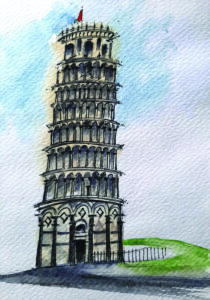
The famed Leaning Tower of Pisa
On the surface of it, Pisa seems like a tourist trap, thanks to the sheer number of people leaning or flipping against the famed Leaning Tower; hugging it, kicking it and even ‘stuffing’ it in their backpacks, trying to make a gram-worthy snap. However, as soon as we reach the centre of Piazza dei Miracoli, surrounded by some of the most recognisable architectural masterpieces in the world, the crowd and chaos become insignificant.
We gaze in awe at the resplendent beauty of the Cathedral, Baptistery and Monumental Cemetery. There are manicured green lawns for one to relax and soak up the atmosphere. Beauty and folly in equal parts, the Leaning Tower is surprisingly declared safe for the next 200 years. One can choose to ascend its winding 269 steps to reach the top and learn all about its 800-year-old engineering history.
But there is much more to Pisa than its central square. So, we stop for a shot of espresso at one of the old-fashioned cafes and continue meandering the town’s alleyways and along the River Arno. Expect lively shops and eateries packed with tourists, locals and students studying in Pisa’s elite universities, well-maintained Romanesque buildings, Gothic churches, Renaissance piazzas and more.
Tip: When here, try Cecina, a simple savoury chickpea pancake commonly found on the coast of the Tyrrhenian Sea, from Genoa to Livorno.
Escape to the characterful, walled town of Lucca
Pisa → Lucca: 20 km
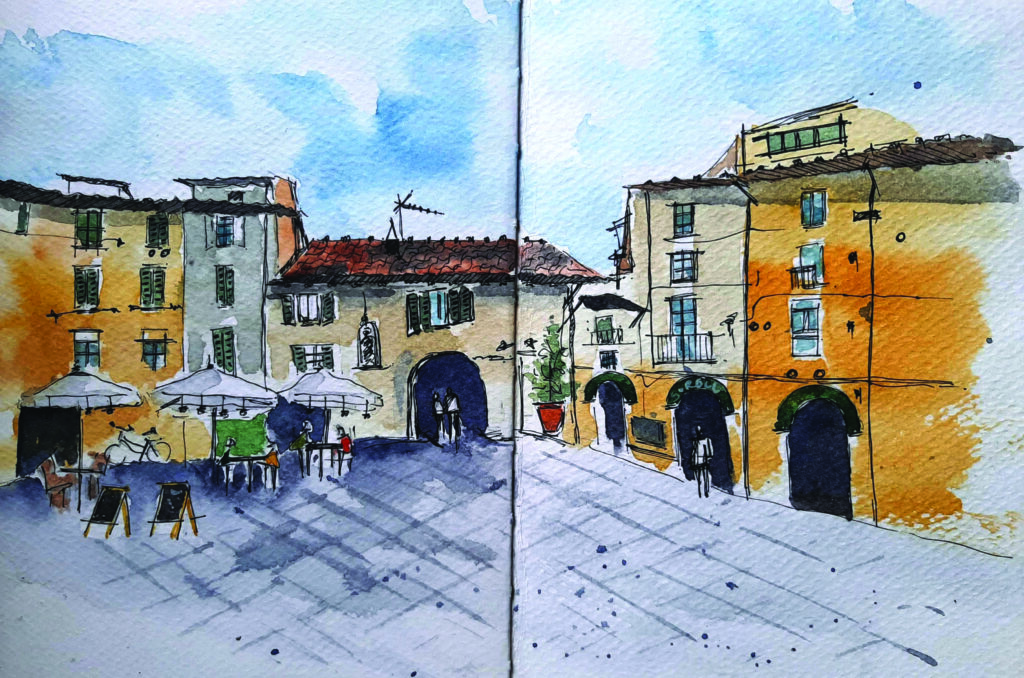
Piazza Anfiteatro or the Amphitheatre Square of Lucca
A quick, 30-minute drive from Pisa is charming Lucca located on a plain at the foot of the Apuan Alps. It is lunchtime already so we settle for rustic Italian dishes, Ravioli Al Tartufo (Truffle Ravioli) and Risotto Verde (Pea and Asparagus Risotto) paired with local white wine, in a ristorante with delightful outdoor seating.
Refuelled, we stroll its cobbled thoroughfares which lead us to the Piazza of San Michele with marble columns connected by heavy metal chains and an imposing Romanesque church founded in the 8th century. What takes our breath away is the elliptical-shaped Piazza Anfiteatro encircled by buildings in inviting faded yellows.
Named after the 2nd-century amphitheatre on the remains of which it was created, this place was a gathering spot for games and events in the Roman era. On our way back to the parking area, we take the pedestrian promenade built on the top of the 4-km-long city wall. Today, the wall separates old Lucca from the modern area and consists of a monumental park, ideal for a walk or a bike ride. We relax on one of the shaded benches before moving on.
Tip: Lucca’s old town is full of ancient skyscrapers or towers from the 12th to 16th centuries. Don’t miss the astounding Guinigi Tower with Holm oaks planted on its summit to represent rebirth and renewal.
Slowdown in “towerful” San Gimignano
Lucca → San Gimignano: 82 km
It is on our way to the hill town of San Gimignano that we begin witnessing quintessential Tuscan panoramas. We make some breaks to take in the undeniable beauty of the misty, emerald scenery. An amazingly-preserved historical town on the ancient pilgrimage route, San Gimignano is known for its medieval stone architecture and rising towers built by feuding noble families competing with each other to showcase their wealth and power.
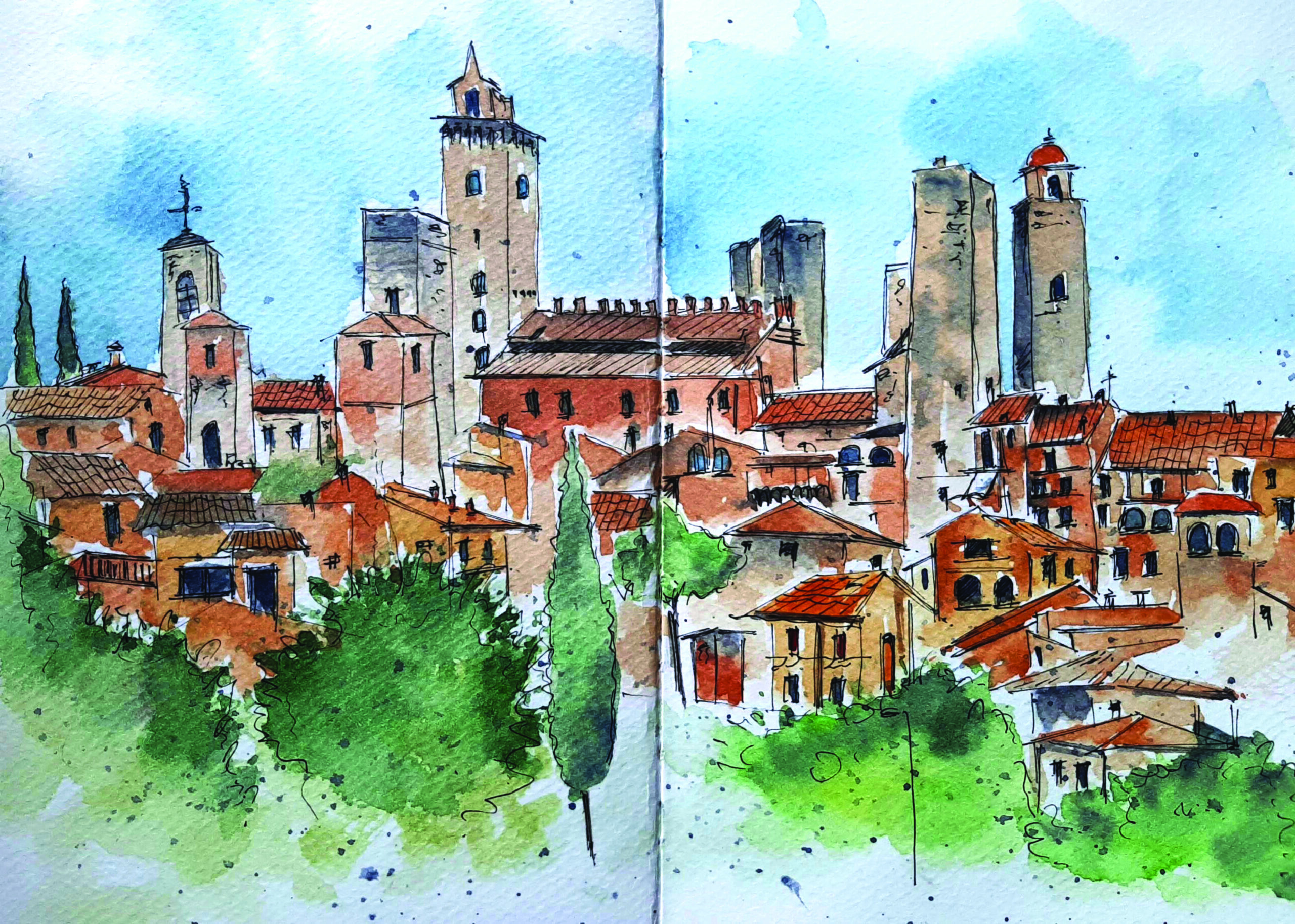
Medieval skyscrapers of San Gimignano
Today, 14 of its original 72 towers still stand. One can climb the city’s tallest tower, about 90 m, which includes a small museum that narrates the tales of war as well as life back in the 14th century. A stroll through the town’s UNESCO-listed, rustic core is an opportunity to step back in time. Its Piazza della Cisterna or the main square named after the water cistern found at its centre, is enclosed by nobility houses, restaurants, boutiques and souvenir stores.
Visit Gelateria Dondoli, an award-winning gelato shop which is known for its original, unusual flavours. Their Italian Garden, a blend of basil cheesecake, strawberry sauce, tomato sauce and crumble, gelato is a must-try!
At Piazza del Duomo, we admire the stupendous Romanesque cathedral, Collegiata di San Gimignano and the pair of towers that were built by the Salvucci family. While San Gimignano is buzzing during the day, it is certainly more romantic post-evening. We grab a table for two at one of the family-owned bistros and relish a local cheese and meat platterpaired with house wine before winding up the day.
Tip: If you prefer quiet over chaos, the countryside surrounding San Gimignano is the perfect base for you. One can also find several working farms that offer bed and breakfast, where one can also sample farm products, fresh from the fields.
Take in all shades of terracotta in Siena
San Gimignano → Siena: 41 km
Siena is an idyllic Italian town that sits over three hills and boasts a unique spirit. Having remained almost unchanged since the 1300s, its conservation is commendable. At its heart is the magnificent, Piazza del Campo with a seashell-shaped brick pavement divided into nine sections that are symbolic of the rule of the Noveschi Political Party which governed Siena between 1292 to 1355.
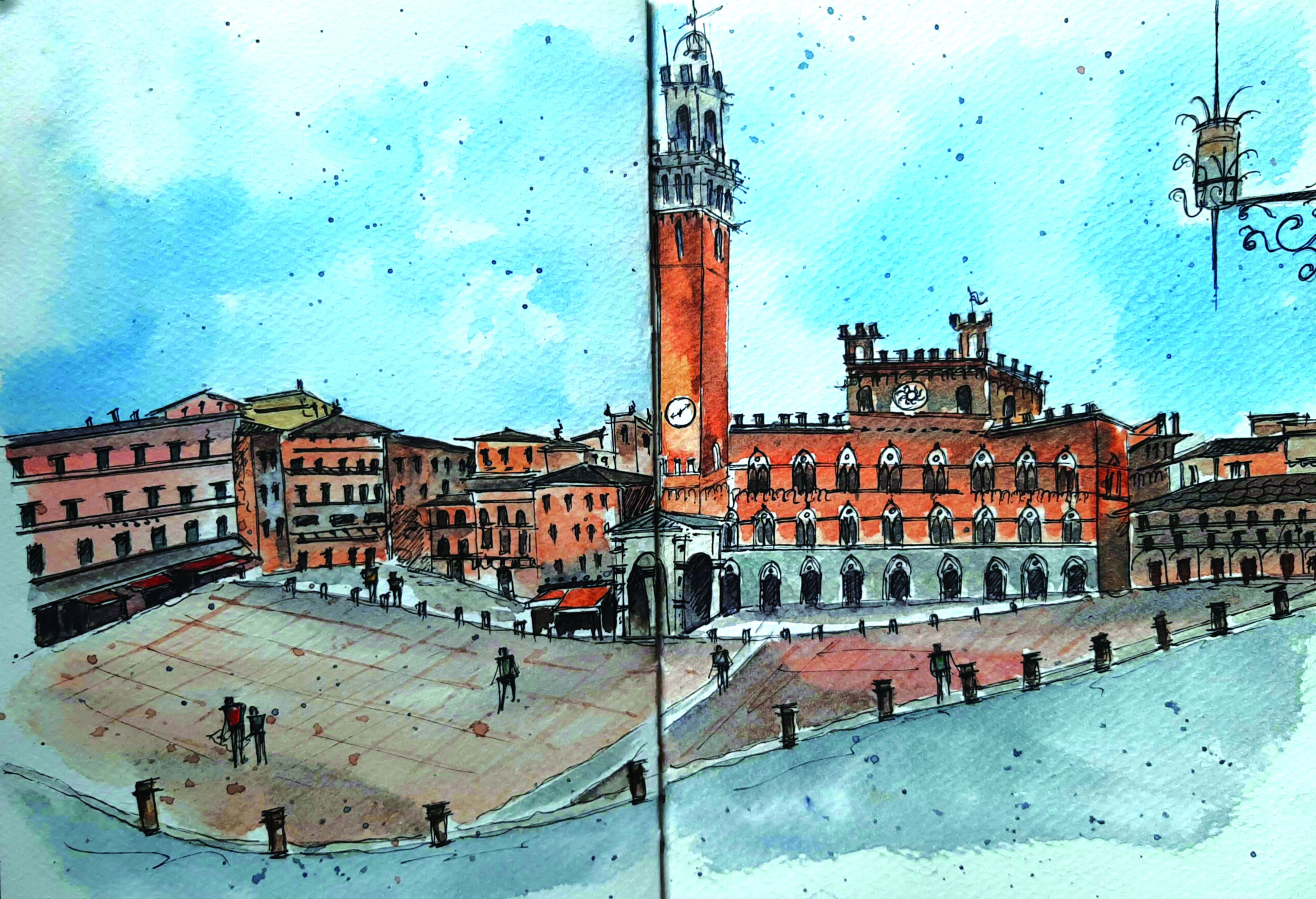
Piazza del Campo, the heart and soul of Siena
The campo was and remains, the focal point of public life in the city which includes the local tradition of Palio de Siena. The legendary horse race featured in the James Bond film Quantum of Solace takes place around the piazza two times every summer. Strolling the town, we notice that the churches here still have two doors, one for humans and one for horses, so that the priest can bless the horses before every race. Siena is full of quaint shops selling everything from ceramics to wine and cheese. We buy a hand-painted magnet as a memory of our time here.
Tip: Explore the interiors of Siena’s Gothic cathedral which includes masterpieces from every age. Its striped marble pillars and marble mosaic inlay and graffito floor are said to be its prized possessions.
Seek art and inspiration in Florence
Siena→ Florence: 76 km
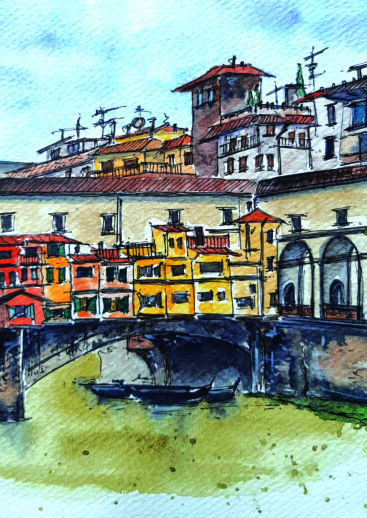
Picturesque Ponte Vecchio, the oldest bridge in Florence
A visit to Tuscany is incomplete without a visit to its biggest city Florence which is a museum in itself. We spend time simply gazing at the Cathedral of Santa Maria del Fiore or the Duomo which is a true spectacle of beauty, and visit Piazza della Signoria, a jackpot of sculptures, each with a story to tell. Among the prominent ones are the life-sized replica of Michelangelo’s David outside Palazzo Vecchio and Neptune’s Fountain.
Among other must-dos are crossing the Ponte Vecchio bridge lined with pocket-sized jeweller and goldsmith shops, indulging in a luscious espresso and croissant at one of the city’s many authentic coffee bars and getting lost in the relaxed passageways of the Oltrarno, or San Niccolò neighbourhood. Art lovers might want to appreciate the greatest treasures at the Accademia Gallery, the Leonardo Da Vinci Museum and Uffizi Galleries.
The idea behind ending the road trip in Florence is to be able to linger in the artistic city for a few nights. Alternatively, one can pick Florence as a base and travel out to see other parts of Tuscany from here.
Tip: One can pick up sandwiches from cafeterias and enjoy a little picnic on a shaded bench at Giardino delle Rose, or Rose Garden, before ascending the steps to Piazzale Michelangelo for the most stupendous lookout over Florence.
KNOW BEFORE YOU GO
- Cars are only to get from one destination to another and not exploring the towns as they are very compact and walkable.
- An International Driving Permit is needed to rent a car in Italy.
- Renting a car is usually cheaper in larger cities like Pisa and Florence. Often it is cheaper to return the car in same city where it was picked up from.
- It is best to rent a small car since the roads in Tuscany are narrow and winding.
- Full coverage insurance is recommended.
- Italian law requires all drivers to keep their headlights on at all times.
- For tolls, you get a ticket when you enter toll roads, and you pay on the way out. Keep some cash handy.
- Parking spaces are plentiful in Tuscany. White parking spots are free, blue spots are paid and yellow spots are reserved for the residents.








